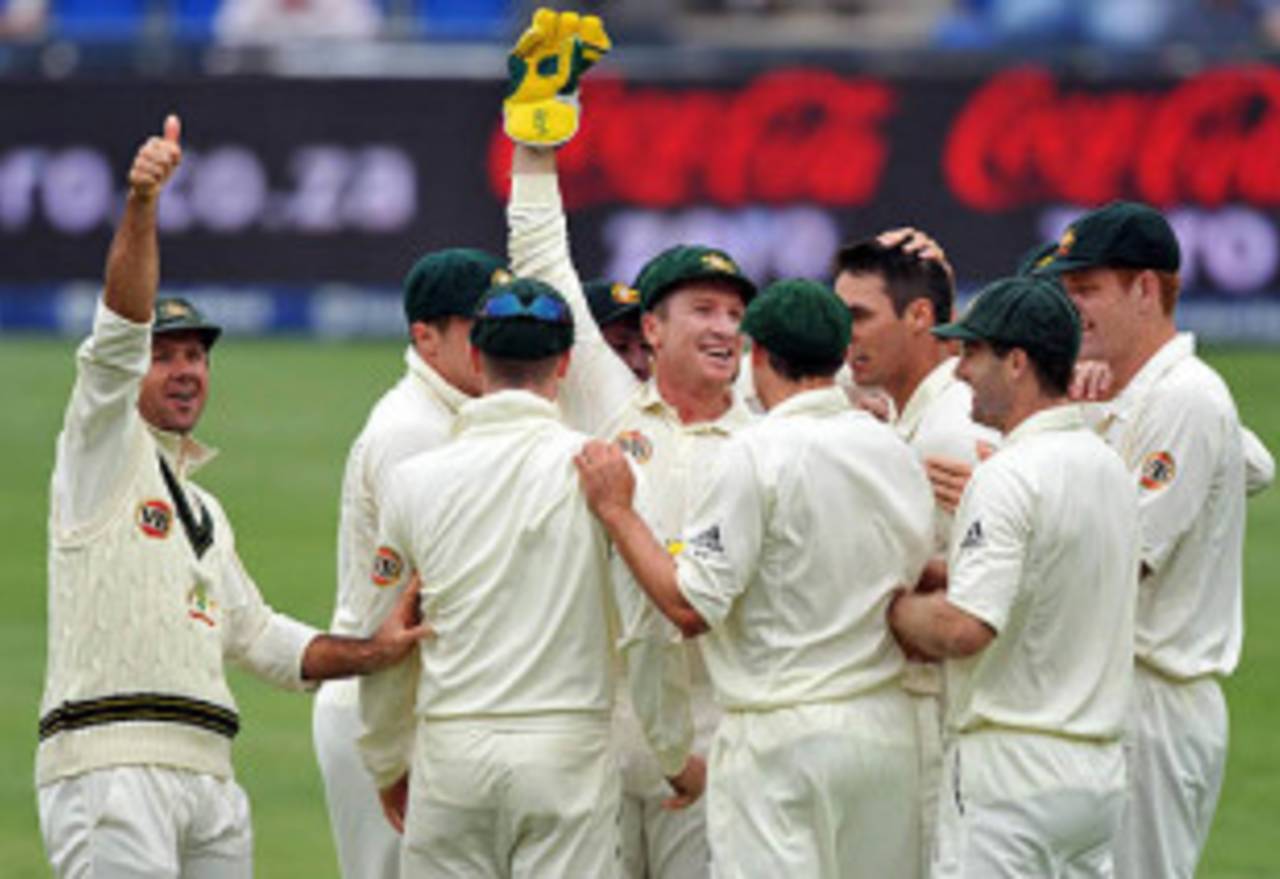Cricket Australia (CA) and the Australian Cricketers' Association (ACA) have moved to stave off defections to lucrative Twenty20 leagues by committing to a new Memorandum of Understanding that delivers higher wages and places greater emphasis on the off-field welfare of the nation's cricketers.
The player payment pool is projected to rise to A$96.2 million (US$76.9m) - an increase of 13.1% - over the next two years, representing a significant increase in the value of state and national contracts. Players will also be remunerated for CA-related sponsorship work and, for the first time, the top-six ranked players will receive "fixed contracts", in which match payments for the next 12 months are paid out in full at the beginning of CA's pay cycle.
The latter move was made following complaints that players were being penalised financially for adhering to Australia's policy of rest and rotation during hectic one-day tournaments. It is intended to serve as an incentive for centrally contracted cricketers to strive to be considered among the best six players in the land.
CA has also acquiesced to ACA calls for players' partners and loved ones to be welcomed on tours, and for welfare programmes to be set in place to prepare cricketers' for life after the game. The moves, according to ACA chief executive Paul Marsh, represent an acknowledgement of the unique social challenges encountered by national and state cricketers, and will go far towards limiting the impact of overseas Twenty20 leagues on Australian competitions.
CA is aware it cannot match the contracts offered by Twenty20 leagues in terms of pro-rata payments - Andrew Symonds, for example, stands to earn US$1.35 million for each six-week stint he completes for Deccan Chargers - but has acknowledged it can outflank tournaments such as the IPL by bolstering its commitment to player welfare.
"Players can be away from home for up to 10 months a year and that, by anyone's standards, is an unnatural life," Marsh told Cricinfo. "What we have here is a greater understanding that cricket, unlike any other sport, can place special demands on players and their families. And with opportunities opening up in the IPL, the EPL and the Southern Premier League - where players can earn more money for less cricket - I think we have now an understanding that if we want to keep players in Australia, we have to give players as normal a life as possible.
"CA is very aware what is now in front of elite players in terms of IPL-style opportunities. Unlike some other countries, they have not yet lost players other than those who are already at the back end of their careers, and I think this MoU reflects the commitment to retaining players for the long term."
Players' overall share of Cricket Australia's revenue - projected at A$370 million (US$296m) over the next two years - has increased from 25 to 26% from previous MoUs. But in an acknowledgment of the precarious global economic climate, CA and ACA have agreed that up to A$3 million (US$2.4m) could be taken from the player pool in each of the next two years if CA's revenue projections fall short of current estimates.
CA is aware it cannot match the contracts offered by Twenty20 leagues in terms of pro-rata payments to players but has acknowledged it can outflank tournaments such as the IPL by bolstering its commitment to player welfare
"We have always acknowledged that the players are stakeholders in the game, and we're not about to send it broke," Marsh said. "The players' share of revenue will remain at 26%, regardless."
James Sutherland, CA's chief executive, stressed the need for financial prudence during this period of economic uncertainty. "It is critically important to us that we pay what the game can afford - and, in so doing, that Australian cricket maintains an appropriate balance between its investment in elite cricket and its investment in grassroots cricket," Sutherland said.
"The new MoU does this. Once again, the agreement is in many ways like a partnership and delivers CA and the ACA an outcome which offers the players more while also increasing Australian cricket's investment in game development."
CA will maintain the current number of national and state contracts, but will substantially increase their value. A base national contract will increase from a minimum A$180,000 (US$144,000) to A$210,000 (US$168,000) over the next two years, with minimum state deals to rise from A$44,000 (US$35,000) to A$52,000 (US$41,500) over the corresponding period. Match payments are set to rise, and prize money for state competitions will almost double from A$550,000 (US$439,000) to A$1 million (US$800,000).
Restrictions have also been removed for international cricketers seeking to ply their trade temporarily overseas. Previously, players surrendered between 2.5 to 12.5% of their contracts depending on the length of their stints in competitions such as the IPL or county cricket, however state players will now be granted a six-week penalty free window.
"At a macro level, this is a deal that is significantly better at attracting and retaining players," Marsh said. "[Australian] football codes can offer money, but they can't offer the unique experience of playing all over the world, which cricket obviously can. That should appeal to younger athletes. And with measures in place to ease the touring burden on families, hopefully strains on players will be reduced."
Alex Brown is deputy editor of Cricinfo
